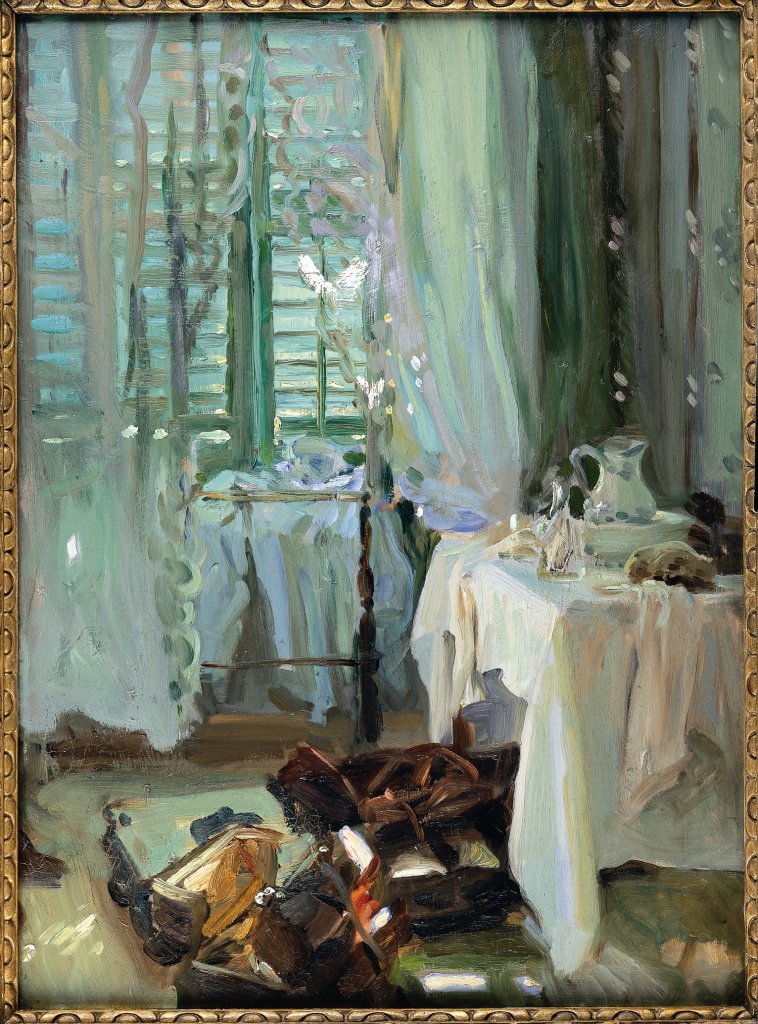Thursday, May 24, 2012
Americans in Florence: Sargent and the American Impressionists
From 2nd March to 15th July 2012 the exhibition "Americans in Florence. Sargent and the American Impressionists" will be displayed at Palazzo Strozzi in Florence._
In 2012, exactly 500 years since the death of Amerigo Vespucci, Florence will be marking this event with an exhibition designed to celebrate the strong ties linking the Old World and the New, and the cosmopolitan ambiance that bound the city to the New World for ever, transmitting European culture and sophistication to America.
The exhibition explores the American impressionists' relationship with Italy, and with Florence in particular, in the decades spanning the close of the 19th and dawn of the 20th centuries. There was a marked upswing in the number of American artists travelling to Europe after the Civil War ended in 1865, and the trend continued on into the early 20th century.
Hundreds of painters came to Paris and other parts of France while others studied in Germany, with England, Holland and Spain being other favourite locations. Italy, however, was an inescapable pole of attraction for most of them. Florence, Venice and Rome had been at the heart of the Grand tour for centuries and had become legendary for all those eager to study the art of the past, quite apart from their appeal in terms of the climate, the countryside, the people, and the overall atmosphere prevailing in them.
For the first time since recent exhibitions in France and England explored these American artists' relationship with those two countries, this exhibition will be hosting the work of American painters who embraced the artistic vocabulary of Impressionism and spent time in Italy.
he exhibition will contain works by painters who, while not explicitly subscribing to the new style, were nevertheless crucial masters for the younger generations: men such as Winslow Homer, William Morris Hunt, John La Farge and Thomas Eakins.
John Singer Sargent, The Hotel Room, oil on canvas; 60.9 x 44.4 cm; Private collection
These will be followed by the great forerunners, artists such as John Singer Sargent, Mary Cassatt and James Abbott McNeill Whistler, who could boast of strong cosmopolitan leanings.
The main part of the exhibition will comprise works by artists of remarkable quality who spent time in Florence and who deserve to be better known. Their number includes members of the American impressionist group known as the Ten American Painters: William Merrit Chase, John Henry Twachman and Frederick Childe Hassam. Franck Duveneck also played an important role in fostering relations between American and local artists by putting together the “Duveneck boys“, a group that included his wife Elisabeth Boott and the painter Joseph Rodefer De Camp.
The Americans in Florence lived their lives and pursued their activities in close contact with their scholar, collector, writer and art critic compatriots in the city, with some of whom they had previously had dealings in America: Gertrude Stein, Mabel Dodge, Bernard Berenson, the brothers Henry and William James, Egisto Fabbri and his family (his sisters Ernestine, a painter, and Cora, a poet) Mabel Hooper La Farge, Bancel La Farge, Charles Loeser and Edith Wharton.
Though tending not to mix with the local population, these American colonies in Italy learnt the lesson of the most up-to-date Italian painting of the day – in Florence it is worth highlighting the importance of the Macchiaioli – and had a certain impact on Italian artists and thinkers, introducing sophisticated and cosmopolitan lifestyles and adopting a more relaxed attitude towards women.
The exhibition will include female portraits of great quality in which women symbolise the modern American nation: young girls, adolescents and even children, often dressed in white, personify the purity and hopes of an entire nation. The female portrait theme provides a link with the activity of American women painters, who were far more emancipated than their French and European counterparts. The more enterprising among them came to Europe and contributed to the cultural osmosis between their country and the Old World, a shining example of this trend being Mary Cassatt. Painting for women was considered little more than a passtime in Europe. Women painters in America were allowed to frequent the academies on an equal footing with their male countparts, while in Paris they had no option but to enrol in private schools for a long time yet.
Catalogue: Americans in Florence: Sargent and the American Impressionists




